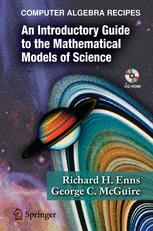

Most ebook files are in PDF format, so you can easily read them using various software such as Foxit Reader or directly on the Google Chrome browser.
Some ebook files are released by publishers in other formats such as .awz, .mobi, .epub, .fb2, etc. You may need to install specific software to read these formats on mobile/PC, such as Calibre.
Please read the tutorial at this link: https://ebookbell.com/faq
We offer FREE conversion to the popular formats you request; however, this may take some time. Therefore, right after payment, please email us, and we will try to provide the service as quickly as possible.
For some exceptional file formats or broken links (if any), please refrain from opening any disputes. Instead, email us first, and we will try to assist within a maximum of 6 hours.
EbookBell Team

5.0
110 reviewsComputer algebra systems are revolutionizing the teaching, the learning, and the exploration of science. Not only can students and researchers work through mathematical models more efficiently and with fewer errors than with pencil and paper, they can also easily explore, both analytically and numerically, more complex and computationally intensive models.
Aimed at science and engineering undergraduates at the sophomore/junior level, this introductory guide to the mathematical models of science is filled with examples from a wide variety of disciplines, including biology, economics, medicine, engineering, game theory, mathematics, physics, and chemistry. The topics are organized into the Appetizers dealing with graphical aspects, the Entrees concentrating on symbolic computation, and the Desserts illustrating numerical simulation.
The heart of the text is a large number of computer algebra recipes based on the Maple 10 software system. These have been designed not only to provide tools for problem solving, but also to stimulate the reader’s imagination. Associated with each recipe is a scientific model or method and an interesting or amusing story (accompanied with a thought-provoking quote) that leads the reader through the various steps of the recipe.
This text is the first of two volumes. The advanced guide, aimed at junior/senior/graduate level students, deals with more advanced differential equation models.